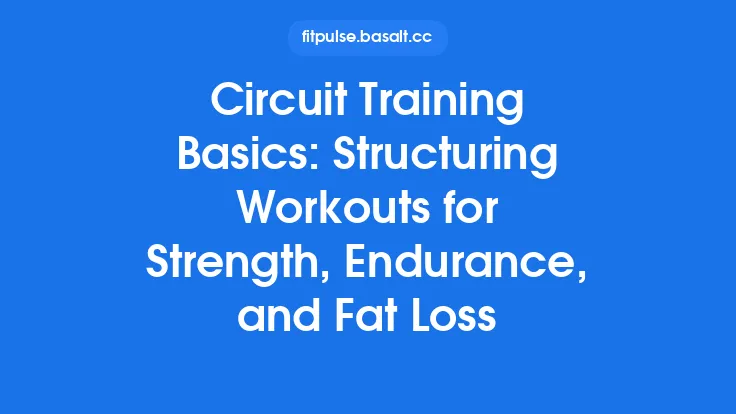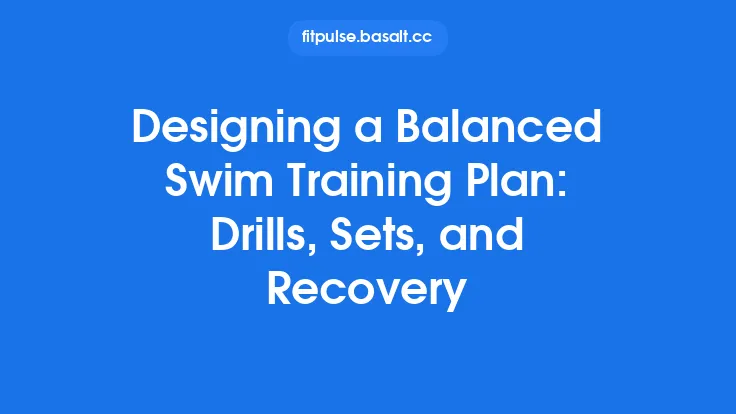Kayaking is more than just a leisurely glide across calm water; it’s a full‑body workout that demands precise technique and sustained upper‑body endurance. Whether you’re carving through white‑water rapids, racing on a flatwater course, or paddling a long‑distance expedition, mastering the mechanics of the paddle stroke and building the stamina to repeat it efficiently are the cornerstones of performance and injury prevention. This guide breaks down the science behind a powerful paddle stroke, identifies common pitfalls, and provides a comprehensive, evergreen training framework to develop the upper‑body endurance every kayaker needs.
Understanding the Biomechanics of Kayak Paddling
A kayak paddle stroke is a coordinated chain of movements that begins in the lower body, travels through the core, and finishes with the upper limbs. Recognizing this kinetic chain helps you train the right muscles and avoid over‚Äëreliance on any single joint.
| Phase | Primary Muscles | Joint Action | Key Sensations |
|---|---|---|---|
| Catch | Latissimus dorsi, teres major, forearm flexors | Shoulder flexion, elbow extension, wrist neutral | Paddle blade entering water cleanly, minimal splash |
| Pull | Rhomboids, trapezius, posterior deltoid, biceps brachii | Shoulder adduction, elbow flexion, wrist pronation | Strong, smooth pull with the blade fully engaged |
| Exit | Triceps brachii, anterior deltoid, pectoralis major | Shoulder extension, elbow extension, wrist supination | Blade leaving water without “skipping” |
| Recovery | Core rotators, glutes, hamstrings | Torso rotation, hip extension, shoulder flexion | Paddle returning to the catch position with relaxed arms |
The lower body and core act as a stable platform, allowing the upper limbs to generate force efficiently. A well‚Äëtimed rotation of the hips and torso transfers power from the legs to the paddle, reducing strain on the shoulders and arms.
Core Elements of an Efficient Paddle Stroke
- Balanced Grip and Paddle Angle
- Hold the paddle with a relaxed, neutral grip; the thumb should rest lightly on the shaft, not wrapped tightly.
- Keep the blade at a 45‚Äëdegree angle to the water during the catch to minimize drag.
- Hip‚ÄëDriven Rotation
- Initiate each stroke by rotating the hips toward the paddling side while keeping the shoulders relatively still.
- This “hip‑lead” technique maximizes torque and protects the shoulder joint.
- Full‚ÄëExtension Pull
- Extend the paddle fully forward before the catch, then pull the blade through a smooth, arcing motion that ends near the hip.
- Avoid “short‑chopping” strokes; they waste energy and increase fatigue.
- Controlled Exit
- As the blade reaches the hip, rotate the paddle slightly outward and lift it cleanly out of the water.
- A crisp exit reduces splash and prepares the paddle for the next catch.
- Rhythmic Recovery
- Let the paddle swing forward in a relaxed arc, using the torso’s opposite rotation to bring it back to the catch position.
- Maintaining a steady rhythm helps conserve oxygen and heart‚Äërate.
Common Technique Errors and How to Fix Them
| Error | Why It Happens | Consequences | Correction |
|---|---|---|---|
| Over‚Äëreaching (stretching the arm too far) | Trying to increase stroke length without hip rotation | Shoulder impingement, early fatigue | Emphasize hip‚Äëlead; keep the arm close to the body during the pull |
| Excessive Wrist Flexion | Gripping too tightly or “flicking” the paddle | Wrist strain, reduced blade efficiency | Adopt a neutral wrist; practice with a light paddle to feel the correct position |
| Flat Blade Entry | Rushing the catch or not angling the blade | Increased drag, loss of speed | Visualize a “soft splash” entry; practice on calm water focusing on blade angle |
| Uneven Power Distribution | Dominant side overcompensating | Asymmetrical muscle development, steering issues | Perform “single‑sided drills” (e.g., paddle on one side only for 30 seconds) to balance strength |
| Holding Breath | Trying to stay still during the pull | Reduced oxygen delivery, quicker fatigue | Practice diaphragmatic breathing; inhale during recovery, exhale during the pull |
Designing an Upper‚ÄëBody Endurance Program for Kayakers
A well‚Äëstructured program should blend specificity (paddling‚Äërelated movements) with general conditioning (overall muscular stamina). Below is a 6‚Äëweek template that can be adjusted for beginners, intermediate, or advanced paddlers.
| Week | Frequency | Main Focus | Sample Session |
|---|---|---|---|
| 1‑2 | 3 × week | Foundation – core stability & low‑intensity endurance | 10 min dynamic warm‑up → 3 × 5 min steady‑state paddle (moderate RPE 4/10) → 3 sets of 12 × banded rows → 3 × 30 s plank variations |
| 3‑4 | 4 × week | Strength‑Endurance – moderate load, higher volume | 8 min interval paddle (30 s hard/30 s easy) → 4 × 8 reps seated cable pull‑downs (70 % 1RM) → 3 × 12 reps dumbbell shoulder press → 2 × 15 reps medicine‑ball rotational throws |
| 5‑6 | 4‑5 × week | Power‑Endurance – high intensity, sport‑specific drills | 10 min “pyramid” paddle (15 s max/45 s easy, 30 s max/30 s easy, 45 s max/15 s easy) → 3 × 6 reps single‑arm kettlebell high pulls → 3 × 10 reps TRX rows → 3 × 20 reps band‑resisted paddle‑simulations |
Key Principles
- Progressive Overload: Increase either the duration, intensity, or volume each week by ~5‚Äë10‚ÄØ%.
- Specificity: Include at least one paddle‚Äësimulating movement per session (e.g., banded paddle pulls).
- Recovery: Schedule at least one full rest day and two active‚Äërecovery days (light swimming, yoga, or mobility work).
- Periodization: Cycle through phases of endurance, strength‚Äëendurance, and power‚Äëendurance to avoid plateaus.
Specific Exercises for Paddle Power and Stamina
- Band‚ÄëResisted Paddle Pull
- Anchor a resistance band at chest height. Stand with feet shoulder‚Äëwidth apart, hold the band with a neutral grip, and mimic the paddle pull (hip rotation, elbow flexion).
- 3 × 12‑15 reps per side, focusing on a smooth, controlled motion.
- Dumbbell “Bent‑Over Row” with Rotation
- Perform a standard row, then rotate the torso toward the pulling arm at the top of the movement, simulating the paddle’s exit.
- 4 × 8‑10 reps each side.
- Medicine‑Ball “Rotational Slam”
- From a standing position, rotate the torso and slam the ball down beside the opposite foot, replicating the core twist of a paddle stroke.
- 3 × 12‑15 reps per side.
- Kettlebell “High Pull”
- With a light kettlebell, pull from the hips to the chest while rotating the shoulder forward, mirroring the pull phase.
- 3 × 10‑12 reps per side.
- Isometric “Paddle Hold”
- Using a paddle or a dowel, hold the blade in the catch position for 30‚Äë45‚ÄØseconds, engaging the lat and forearm muscles.
- 3 × holds per side, focusing on tension without fatigue.
- Closed‑Chain “Push‑Up Plus”
- Standard push‑up with an added protraction at the top (scapular “plus”) to strengthen the serratus anterior, which stabilizes the shoulder during paddling.
- 3 × 12‑15 reps.
Periodization and Recovery Strategies
- Micro‚ÄëCycles (Weekly): Alternate high‚Äëintensity paddle intervals with low‚Äëintensity steady paddling to promote both aerobic and anaerobic adaptations.
- Macro‑Cycles (Monthly): Every 4‑6 weeks, schedule a “deload” week where volume is reduced by 30‑40 % and intensity is kept low. This prevents overuse injuries, especially in the rotator cuff and forearm flexors.
- Sleep & Nutrition: Aim for 7‚Äë9‚ÄØhours of sleep per night. Prioritize protein (1.6‚Äë2.2‚ÄØg/kg body weight) and carbohydrate intake (5‚Äë7‚ÄØg/kg) to support muscle repair and glycogen replenishment.
- Active Recovery: Light swimming, gentle yoga, or foam‚Äërolling can improve circulation without adding stress to the shoulders.
Integrating On‚ÄëWater Practice with Off‚ÄëWater Training
| Goal | On‚ÄëWater Session | Off‚ÄëWater Complement |
|---|---|---|
| Technique Refinement | 30 min focused stroke drills (e.g., “single‑arm paddling”) | Mirror work: practice paddle motion without water, using a broom or PVC pipe |
| Endurance Build | 60‚Äë90‚ÄØmin steady‚Äëstate paddle at moderate intensity | Rowing machine or indoor paddle ergometer for 20‚Äë30‚ÄØmin |
| Power Development | Short, high‑intensity sprints (10 × 15 s max effort) | Plyometric push‑ups and medicine‑ball slams |
| Recovery | Light paddle (15‚ÄØmin easy) | Stretching routine targeting chest, shoulders, and thoracic spine |
By aligning the physiological demands of on‚Äëwater paddling with targeted off‚Äëwater work, you reinforce motor patterns, improve muscular endurance, and reduce the risk of skill decay during off‚Äëseason periods.
Monitoring Progress and Adjusting the Plan
- Performance Metrics
- Stroke Rate (SPM): Track beats per minute during a set distance; a lower SPM at the same speed indicates improved efficiency.
- Heart Rate Zones: Use a chest strap or wrist monitor to ensure you’re training in the intended aerobic or anaerobic zones.
- Distance Covered: Record total meters paddled in a fixed time (e.g., 30‚ÄØmin) to gauge endurance gains.
- Strength Assessments
- Pull‚ÄëUp or Lat Pull‚ÄëDown Max: Reflects upper‚Äëback strength crucial for the pull phase.
- Forearm Grip Dynamometer: Monitors forearm endurance, a common weak point for kayakers.
- Subjective Measures
- Rate of Perceived Exertion (RPE): Keep a training log noting RPE for each session; a decreasing RPE for the same workload signals adaptation.
- Pain/Discomfort Diary: Early detection of shoulder or lower‚Äëback discomfort can prompt technique tweaks before injury occurs.
When metrics plateau for more than two weeks, consider deloading, changing exercise selection, or increasing the specificity of on‚Äëwater drills (e.g., adding more single‚Äëarm work).
Equipment Considerations that Support Technique and Endurance
- Paddle Length & Blade Shape: Choose a paddle that matches your height and kayaking style. A longer paddle can increase leverage but may demand more shoulder mobility; a shorter blade reduces drag and can be more forgiving for endurance paddlers.
- Adjustable Footrests: Proper foot placement enables effective hip rotation. Ensure the footrests are snug but not restrictive.
- Ergonomic Grip Tape: Reduces hand fatigue and encourages a neutral wrist position.
- Resistance Bands & Suspension Trainers: Portable tools for on‚Äëdeck or at‚Äëhome paddle‚Äëspecific strength work.
- Paddle Ergometer: Provides objective data on stroke power and cadence, useful for tracking progress during indoor sessions.
Investing in equipment that aligns with your body mechanics not only enhances performance but also minimizes the cumulative stress on joints and muscles during long paddling sessions.
Putting It All Together
Mastering kayak paddling technique and building upper‚Äëbody endurance is a progressive journey that blends biomechanical insight, disciplined training, and smart recovery. By:
- Understanding the kinetic chain and emphasizing hip‚Äëdriven rotation,
- Polishing each stroke phase—catch, pull, exit, recovery—while eliminating common errors,
- Following a periodized training plan that balances specific paddle‚Äësimulating work with general strength‚Äëendurance exercises,
- Monitoring objective and subjective metrics to guide adjustments, and
- Choosing equipment that complements your anatomy,
you’ll develop a paddle stroke that feels effortless, a shoulder complex that stays healthy, and the stamina to stay on the water longer—whether you’re chasing a sunrise on a tranquil lake or navigating the rapids of a mountain river.
Happy paddling, and may every stroke bring you closer to the water’s edge and the adventure that lies beyond!





